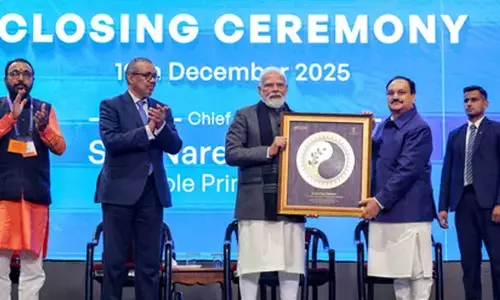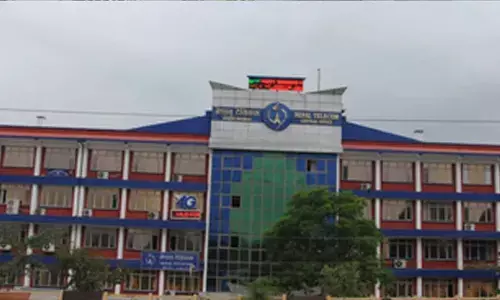Majority Indian districts face extreme heat waves, rainfall events: Study
Share :

Over 84 per cent of Indian districts are prone to extreme heat waves, of which 70 per cent are witnessing increased frequency and intensity of extreme rainfall events, according to a study on Tuesday.
New Delhi: Over 84 per cent of Indian districts are prone to extreme heat waves, of which 70 per cent are witnessing increased frequency and intensity of extreme rainfall events, according to a study on Tuesday.
The study, released by geographical information system (GIS) software and solutions provider Esri India and IPE-Global, showed that the frequency, intensity, and unpredictability of these extreme heat and rainfall events have also risen in recent decades.
In the last three decades, India has witnessed a 15-fold increase in extreme heat wave days across the March-April-May and June-July-August-September months.
In the last 10 years alone, the country witnessed a 19-fold increase in extreme heat wave days, showed the study, noting that monsoons in India are witnessing an extended summer-like condition except on non-rainy days.
“The increasing frequency and intensity of heat waves in conjunction with intense precipitation are causing significant impacts on lives, livelihoods, and infrastructure. A holistic, data-driven approach is essential for informed policy decisions, climate adaptation, and resilience,” said Agendra Kumar, Managing Director, Esri India.
Further, the study based on district level heat-risk and extreme rainfall data between 1993 and 2022 showed that Gujarat, Rajasthan, Uttarakhand, Himachal Pradesh, Maharashtra, Uttar Pradesh, Meghalaya, and Manipur are witnessing the double whammy of heat stress and extreme rainfall.
In October, November, and December, more than 62 per cent of heatwave-prone Indian districts have been witnessing erratic and incessant rainfall.
“The current trend of catastrophic extreme heat and rainfall events are a result of 0.6 degrees Celsius temperature rise in the last century. El Nino is gaining momentum and making its early presence felt across the globe with India facing the extreme events of turbulence more in patterns than waves,” said Abinash Mohanty, Head- Climate Change and Sustainability Practice at IPE Global.
Recent Kerala landslides triggered by incessant and erratic rainfall episodes and the cities getting paralysed with sudden and abrupt downpours are a testament that the climate has changed.
Mohanty noted that the analysis “suggests eight out of 10 Indians will be highly exposed to extreme events by 2036”.
Kumar suggested using GIS technology, with advanced spatial analysis tools for a comprehensive understanding of the impact of climate perspectives.
“Decision-makers in government can use it for resilient infrastructure planning & development, disaster management, and citizen engagement. Businesses can integrate climate insights for better strategic planning and building higher resilience in supply chains and business operations,” Kumar added.













